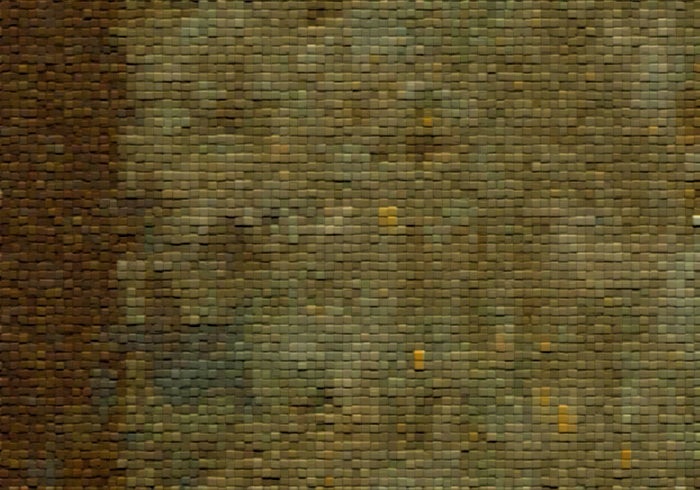Today was a long day of travelling, but as a person who likes travelling, it was great! We had an early start to the day, with the alarm set to 5 am and breakfast in the our room at 5:20 am before leaving for the airport at 6 am. The day involved two flights, first from Bishkek to Tashkent (in Uzbekistan), and then from Tashkent to Urgench in western Uzbekistan. The drive to the airport was about 30 kilometres, so it was about 6:30 am by the time we arrived, hopefully plenty of time as our first flight (to Tashkent) departed at 8:15 am.
Ours was the only flight departing from Bishkek Airport this morning, but the procedures were long and bureaucratic, though friendly and affable, so it was about 7:15 am before we emerged through customs and immigration, even though our flight had just thirty-something people on board.
Part of the delay was explaining to the immigration officials why we did not have an entry stamp in our passports. Fortunately, I had arranged documentation the previous evening from the hotel which, together with a fax from our driver verifying that the border station at Kegan has not been issued with any stamps. After a bit of too-ing and fro-ing, out passports were stamped with exit stamps and we were allowed to proceed.
Bishkek Airport (like all the airports in this part of the world) was a fascinating place, with a mix of vintage Soviet-era planes plus, in this case, an impressive line-up of modern US Air Force C-17 transport planes in a threatening matt dark grey colour scheme.
Our plane was one the older Soviet-era planes on the tarmac, an Altyn Airlines Antonov An-24 (registration EX-014), built in 1968. The flight to Tashkent was smooth and provided great views of the snow-capped mountains on the border between Kyrgyzstan and Uzbekistan in spite of the crazed, scratched and semi-opaque windows of this old aircraft. In fact, the aircraft seemed certainly in need of a ngood overhaul, perhaps starting with the very faded paint job and the smooth tyres on the main landing gear, plainly visible through the windows from the passenger cabin.
Upon arrival in Tashkent, we completed the extensive customs forms (in duplicate originals) once again, and proceeded to the domestic terminal. We had to wait for an hour before we could check-in, but when we did we received the joyous news that we would be flying on a very rare type of aircraft (oh, the thrill!!!), a new type of Russian twin turboprop aircraft of which only a few have been built. Our flight to Urgench was on an Uzbekistan Airlines Ilyushin Il-114 (registration UK-91102), and was impressive for its smoothness and quietness – it was a very impressive aircraft.
The flight from Tashkent to Urgench afforded some great views of the desert terrain of central Uzbekistan, and then on approach to Urgench, some great views of the irrigated farmland around the large Amu-Darya River. Upon arrival in Urgench, we collected our luggage and took a car to Khiva, our destination, about 30 kilometres away.
Our hotel, the Malika-Khina, was a new hotel situated directly across the courtyard from the western gate into the old city of Khiva, a superb location enhanced by the view from our room, which looked directly across to the old city.
Although the plan was to spend all day tomorrow exploring the old city of Khiva (and that is still the plan!), the temptation of looking directly out to the old city proved too much to resist, and Andy and I went for a preliminary exploration lasting about two hours from 4:30 pm to 6:30 pm.
Khiva was even more impressive than I had expected, especially in the clear afternoon sunlight. Kihiva was one of the key towns on the ancient Silk Road that connected China with Persia and Europe, and the Lonely Planet Guide suggests the name "Khiva" conjures images of slave caravans, barbaric cruelty and terrible journeys across deserts and steppes infested with wild tribesmen. The historic centre today is surrounded by a wll preserved (or well restored) city wall enclosing a rectangle measuring about 400 metres east-to-west and 800 metres north-to-south. It was restored un der a Soviet conservation program during the 1970s and 1980s, and it is so well preserved that it seems a little sterile, despite the people and children mingling in the streets.
Our initial impression of the old city, though, is one of impressive buildings built of sand-coloured stone, bricks and mud, interspersed with mosques, madrassas (koranic schools), tombs and alleys, with many of the buildings decorated with intricate Islamic geometric tile patterns, often in brilliant blue and white. Our quick afternoon stroll has certainly whetted our appetites for tomorrow's explorations.
We had a great dinner of shashliks and Uzbek bread in a little café between our hotel and the western gate, thankfully finished by about 7:30 pm because the same restaurant began hosting a huge function starting at about 8:30 pm. The local music was still continuing at full volume at 11:30 pm as I was typing this diary and shows no signs of slowing down – a minor problem as we needed to have our window open to let in some cool air as the temperature was still 28 degrees. A substantial volume (carefully chosen word!) of local culture seemed destined to be shared with us for much of the night!
















